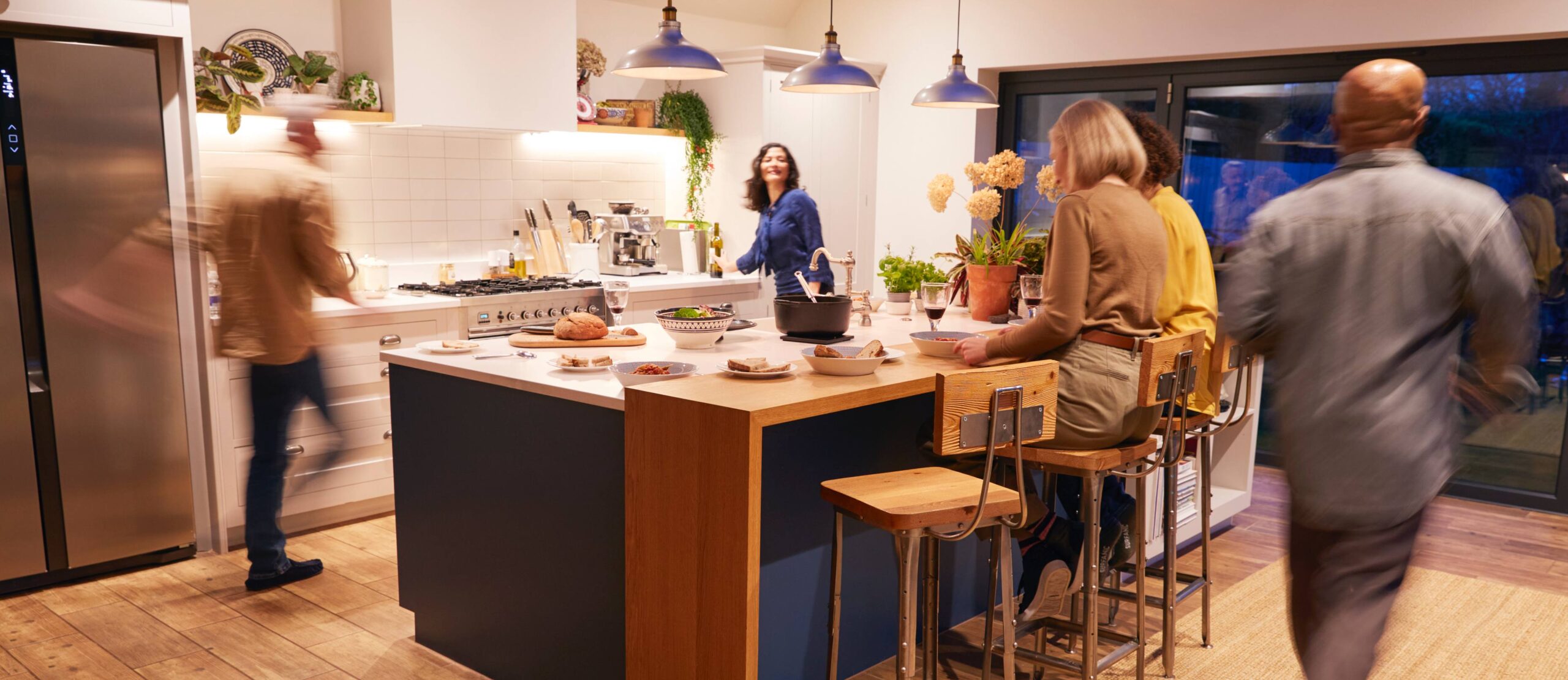HVAC, lighting and security challenges on multi-res projects
Lighting, heating and security are key components of any build, and what might seem relatively straightforward on a single dwelling site can be a minefield of potential pitfalls on a multi-res project.
Efficient electrics make all the difference to the look, feel and functionality of a multi-residential building. They also have implications for the social and environmental outcomes, and importantly, can impact on the profitability of a build. Let’s take a closer look.
High-rise HVAC
Many issues have come to light over the past several years that have highlighted the need for improved ventilation in multi-res buildings.
High-rises are all too often linked with poor indoor air quality (IAQ). As they become more sealed up to meet energy efficiency and weatherproof requirements, the risk of SBS (Sick Building Syndrome) and condensation build-up increases.
“We are what we breathe, and IAQ and good mechanical ventilation is so often overlooked in multi-res buildings”, says Darren Robinson, General Manager Sales and Marketing at Ventair.
“The new NCC 2022 standard has made changes to further improve condensation mitigation within buildings, along with a focus on energy efficiency.
“This includes calculations for continuously operated exhausts for well-sealed buildings, with more work continuing.”
The cost efficiency of any build is important, particularly when looking at factors such as increases in power prices.
HVAC done correctly can significantly reduce heating and cooling costs, and a building’s carbon footprint.
“With the introduction of EC motors capable of providing ventilation at very low wattages, the all-important long-term savings are significant,” says Darren.
It pays to consult with an expert ventilation supplier or engineer. Outside of the regulations, design factors such as open showers, double showers and floor-to-ceiling tiles further add to the challenges of eliminating condensation and mould.
“The electrician is often asked to supply and install ventilation solutions and can be left to carry the compliance liability and risk when things aren’t right,” says Darren.
Ventair offers a full range of indoor air quality, solution-based products, designed for multi-res buildings, including Fresh Vent, which allows the supply of fresh filtered outdoor air ideal for use in more airtight multi-res developments with poor air circulation, and the Svara app-controlled wall fan.
Lighting multiplied
While the average homeowner might spend a few happy hours deliberating the scope of their lighting throughout the house, there are myriad extra considerations to factor in on a multi-res development.
“Multi-residential require a large degree of lighting design to comply with lighting standards,” says Ben Mills, Executive General Manager at Energetic Lighting Australia.
“While it really is up to the individual what they want for their lighting, typically, ceiling heights are low, so we need to avoid overloading the ceiling with downlights.”
Instead, designers might layer the rooms with accent lighting highlighting features or details, and feature lighting with decorative pendants, table, floor and lamps.
“Integrating concealed LED strip lighting into joinery can lend an architectural effect to bathrooms and kitchen areas,” says Ben.
And then there are the regulations, which are unsurprisingly way more complex in a larger residential building.
“There are more standards to consider in multi-res buildings around the lighting, which are referred to within AS1680. This standard sets out recommendations designed to produce good seeing conditions in buildings by means of appropriate lighting.
“The code deals with industrial, commercial and public buildings, and the working areas in dwellings. Therefore, the common areas within multi-res fall within this code. Emergency Lighting Standard 2293.1 is also applicable for common areas and stairwells.”
As with many other areas of the multi-res build, energy-efficient lighting is now a must, with lighting control and sensors designed into underground car parks, stairwells and common areas.
“Combine this with good quality LED lighting products, and you’ll save energy and keep maintenance costs down.”
Safety first
Once upon a time, we left our keys with a neighbour. A big part of multi-residential living is having lots of neighbours, but often it’s the case that the more you have, the less you know. Not being aware of each other’s usual comings and goings means security is paramount. And a lapse in security of communal areas such as foyers and garages compromises the security of the whole building.
Integrated security (hardware and software) helps to meet the security challenges of today’s building environment. It ensures security systems include access control and intrusion detection so that building occupants are safe, assets are protected, and risk is reduced. Schneider’s EcoStruxure Security Expert is an integrated, role-based physical access control and intrusion detection solution that unifies your building’s security infrastructure and building management systems.
“At Schneider, it’s all about customer satisfaction, making sure products are fit for purpose and future-proofed,” says Kate Neski, BDM – Built Environment at Clipsal by Schneider Electric. “Our team works with consultants at the consult and engineering stage, then with the contractor at the rough in, fit off and integration stage, and finally with the end user at the handover stage.”





Comments (0)
Write a Comment